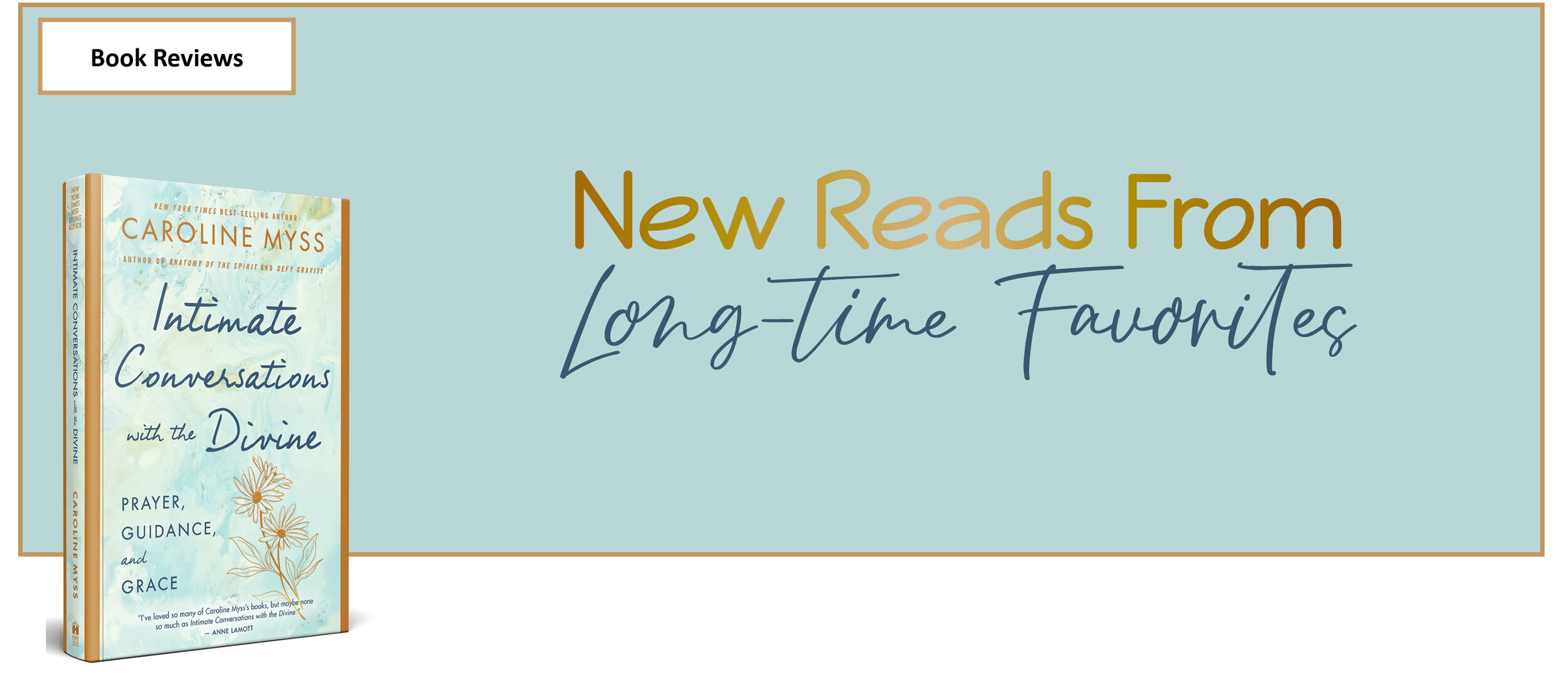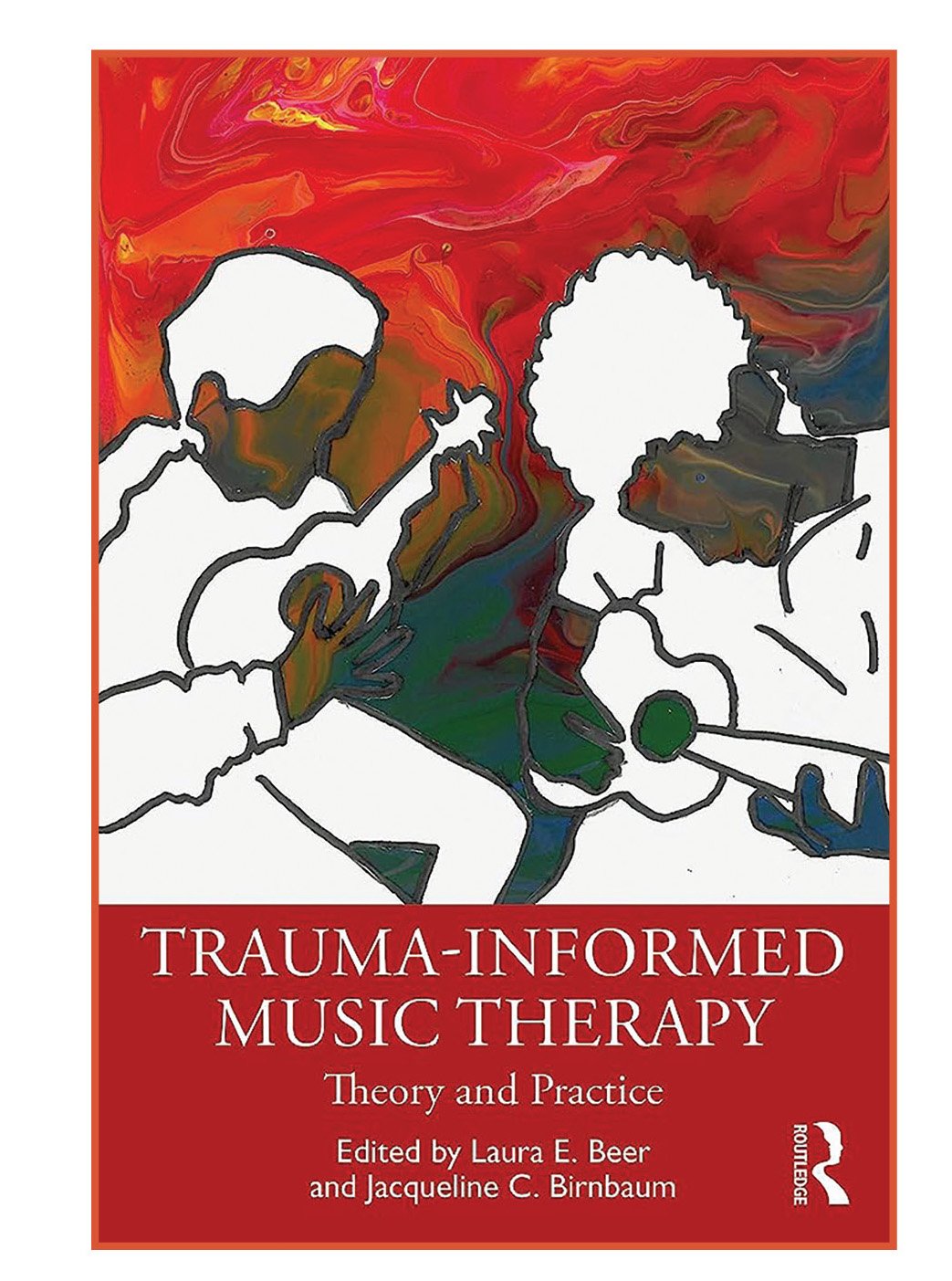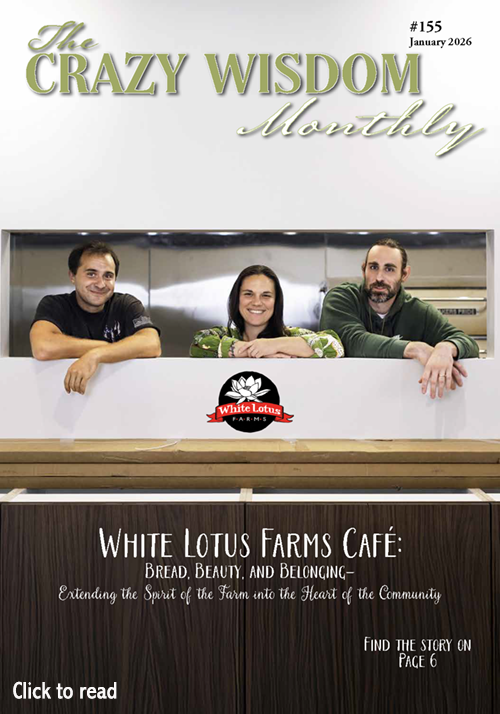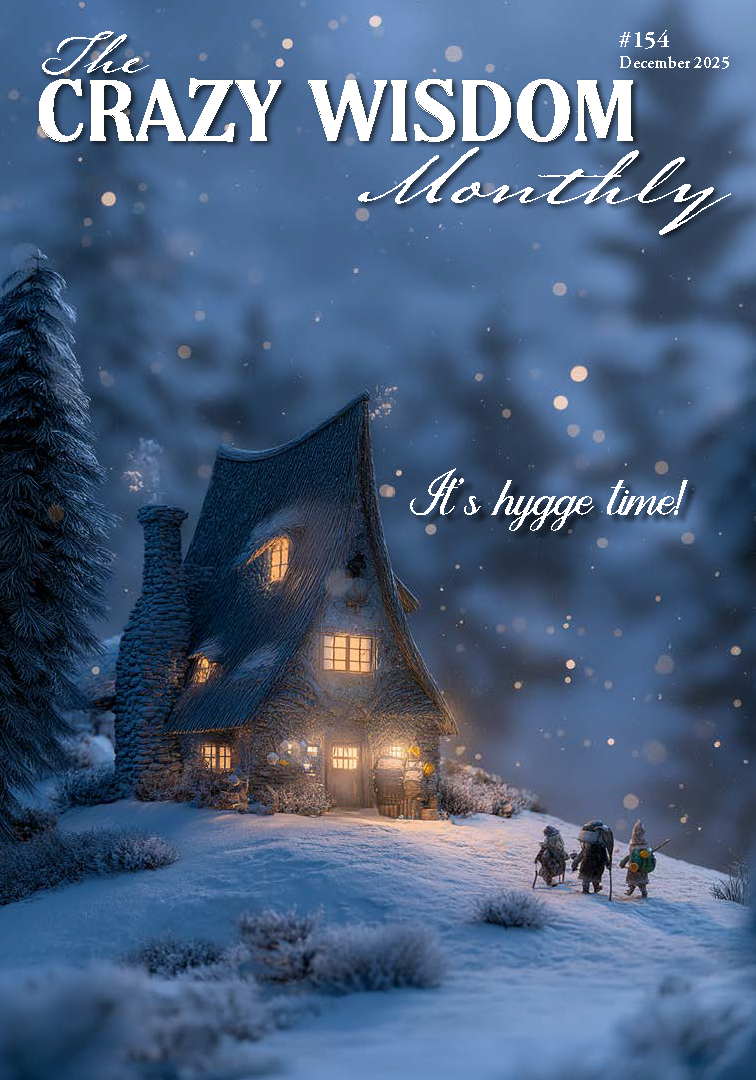By Catherine Carlson
Both Caroline Myss and Julia Cameron are well-known authors in the self-help, healing, and spirituality genres. They both burst onto the scene around the same time, nearly 30 years ago. Since that time each of them has produced an entire shelf of books unto themselves and each became classroom teachers of their work. Coincidentally, both grew up in the Chicago suburbs. Devotees of their work can’t help but wonder what else might Caroline or Julia might have to offer, so I decided to read and review their newest books.
Author, and spiritual teacher, Caroline Myss was an original and powerful voice in the self-help genre back in the 1990’s, beginning with books such as Anatomy of the Spirit: The Seven Stages of Power and Healing. Her gift of medical intuition was a new concept. Her newest release is called Intimate Conversations with the Divine: Prayer Guidance and Grace. The pre-press preface was written at the onset of the shift of 2020 and addresses the global Covid-19 pandemic. She’s quick to point out that, “We have been living in a psychic pandemic of fear for many years,” and this prayer book seeks to address that fear.
Myss is the product of a Catholic upbringing which gave her a foundation for connecting to the divine in a unique way, bridging spirituality with healing. This is the theme in all her books. Myss also teaches her work. Several years ago, at the end of her classes, Myss would share her prayers with her students. Much to her dismay, they began to request copies. Out of the many requests for copies grew the birth of this book. Sharing her own personal spiritual practice with the world was not something she ever thought she would do, but realized it was something she had to do.
According to Myss, people have been praying in one form or another for centuries, but it is a language that has become absent in our daily lives. Prayer books are not new, but Myss’ own prayers may be. At first glance, I expected to see pages full of simple stanzas surrounded by white space. Instead, they are actually short chapters, 100 in total, each devoted to a relatable theme. I randomly opened to a page to see what came up (something she suggests doing). It was Prayer 39 called Healing Night Flights, a prayer for repairing one’s “depleted soul. . . weary body and . . . burdened heart,” while asleep. As we follow her conversation, she talks about the work we have to do ourselves and writes, “There is no such thing as a small act of darkness just as there is no such thing as a small act of love.” There you have it. This is not a light and airy prayer book.
The prayers read more like essays, or soliloquies on different topics, much like reading a sermon, only very intimate, deep, and relatable. Each two-to-four-page chapter is divided into Prayer, Guidance, and Grace, and ends with an italicized message as in chapter 39 above, “Lord grant me the grace to awaken—truly awaken—and the courage to embrace that mystical experience.” This is the part that is what you might expect a traditional prayer book to look and sound like. Other chapters have titles such as: Confronting my Frightened Inner Self, Sharing Blessings, and The Gift of Aging. What is labeled Prayer is essentially her conversation to the Divine about a certain subject. In the Prayer section of the chapter There but for the Grace of God Go I, she discusses her encounter with a homeless man who joins her on a park bench. He asks her for an iced tea, she agrees and offers to get him a sandwich as well. She becomes uncomfortable when he asks her to eat with him, not wanting to be alone. She obliges him and shares her—not often seen—vulnerability in this experience. She has another meeting with another woman she feels has the signature of a saint and muses as to how the Divine is choosing them these days.
The sections on Guidance involve Myss going deeper into the subject matter of the related Prayer. Here she asks questions and may share a relevant story. In the chapter called Only You Could Change the World so Fast, she says the current virus is the agent of bringing the world to a stop but not the mystical agent—the agent behind the scenes, so to speak. She says “We haven’t really grasped that ‘creating our own reality’ is a mystical truth, not a behavioral one.” The Guidance here is to understand the truth that we have the power to create through every choice we make.
In the Grace portion of a chapter on faith she says faith and trust go hand in hand and they are the foundations of self-esteem. In typical fashion, she does not mince words. “If you cannot Trust yourself, you can never—ever—Trust another person.” The thing you have to appreciate about Myss is that she’s going to take you deeper than you might be comfortable with so you’ll do your own inner work. She’s a strict teacher and regularly raps the spiritual ruler on the reader’s knuckles.
Myss makes a tight case for prayer in our lives and her book provides us with the medicine. She points out that we are in a historical crisis of sorts. Where the “majority do not know what they believe in.” Humanity is vulnerable. Not knowing where we stand, we might believe the loudest, strongest voice around even if it’s negative, even in the context of religion.
Prayer or words, can help or heal and she defines the true meaning of prayer as “a request for help in how to see.” To find the words and the hope to guide you in this life. In this most personal work of hers yet, Myss gives us an opportunity to join her in asking for help through prayer.
Book Review:
The Listening Path
by Julia Cameron
Switching gears, readers and students of Julia Cameron’s 1992 original creativity course, The Artist’s Way, will undoubtedly have their ears perk up upon hearing about her new book, a six-week Artists Way Program titled The Listening Path: The Creative Art of Attention. Creativity is the foundation of Cameron’s teachings and her new book builds on this with the concept of listening. She seeks to answer the question—how does listening feature into our lives as creatives?
At this point in her career Cameron is a seasoned teacher. Her long-time students and readers are seasoned as well. The Listening Path refines the creative process even more. The introduction explains the three main tools of The Artist’s Way: Morning Pages, The Artist’s Date, and The Daily Walk. One need not have read any of her prior books to understand these.
Morning Pages are the work portion, an opportunity for you to be heard, by you! These are three completely imperfect handwritten pages of whatever is in your head written each morning upon waking. My experience is when morning pages are done consistently, they make everything a little easier. The Artist Date brings in the fun factor. Often resisted, giving yourself this special time to focus on your inner artist, you can’t help but listen. A period of strong writing followed one student’s artist date to a pet store where she got to pet the baby rabbits. Lastly the Daily Walk “brings us into the present moment.” We can’t help but look and listen to our environment as we move through it. These three pieces are the foundation of her Artists Way programs.
Read related article: Book Review: Being at Your BEST When Your Kids Are at Their Worst
The first three weeks of The Listening Path are all about listening to what is in your immediate vicinity: the sounds in your environment, other people, and your higher self. Cameron writes at length about part of her day with respect to the entirety of sounds around her: The loud noise of a hail storm and the effects it has on her dog. She says by tuning out sounds we do ourselves a disservice. For example, tuning in to the alarm clock noise you despise may inspire you to take the action of getting one you like better. Liking your alarm clock sound will have the added effect of making you happier, and you will be more likely to tune in further. Listening to pleasant sounds makes us more pleasant. “Happiness is a primary characteristic of the Listening Path,” says Cameron.
When it comes to listening to others Cameron points out there can be the tendency to interrupt, have your response ready ahead of time, or listen without saying anything. She interviews fellow artist friends and shares with us how listening factors into their own creative processes. This is a non-intimidating workbook with simple “Try this…” invitations for our ears peppered throughout. She took what she heard from her actor and writer friend and turned it into one of those suggestions. Try this: Plan to meet a friend for a chat with the intention of listening carefully to learn. Afterward, consider what you learned and discovered. It’s a great opportunity to practice being curious.
Working with the previous Artists Way tools can make us feel more ready to listen to our higher self. Cameron shares how writing to her “inner elder,” calmed her anxiety about buying a home for the first time in many years. She addressed the naysayers: the inner critic and others who claim this is just our imagination. There are a series of questions she asks herself when faced with any troubling situation, such as: “What do I need to accept?” Tuning into our intuition provides comforting guidance.
The following weeks invite us to consider something we may have never in our lives actively listened to—voices beyond our immediate environment such as listening to those beyond the veil like deceased loved ones or historical figures, and lastly, listening to silence. Here Cameron shares that she communicates regularly with close friends that have passed on. I was surprised how simple and easy she made it sound. “Can I hear from Jane?” she asks and immediately, Jane responds. Having her friends’ supportive messages are encouraging.
Similarly, Cameron listens to voices of public figures that are no longer living. She says the intention is key here. Who do we admire? Cameron admires and writes to Bill Wilson, the co-founder of Alcoholics Anonymous. He offers appreciation and reassurance of her work. Cameron has previously shared that the late famous duo—Rogers and Hammerstein, helped her write musicals. Writing music was something new that her Morning Pages suggested she try. She has now completed three musicals and two collections of children’s songs. Cameron points out that to communicate with our heroes builds connections that strengthen ourselves. Why not make an attempt to listen to someone you find wise, who has all the time in the world to speak to you?
The final chapter on listening to silence may be challenging to many. “We quake in its unexpected emptiness.” So many of us live with constant background noise, be it TV, radio, or even going shopping with earbuds in. Cameron encourages her silence avoiding friend to try sitting in silence for five minutes. He calls her after the experiment and reports that although it was different, he remembered something important and had some new ideas for his week. Cameron insists the silence isn’t silent at all, it is filled with a benevolent presence. For those that seek silence it can also be difficult to find it, especially in the city. She suggests finding the quietest environment you can. It could be a church or a library (when open), and tuning into the silence to discover what you hear within it. After time spent in silence, our senses are undeniably sharper and more alert. As I was enjoying a bit of silence at a park recently, I picked up a safe but unpleasant burning smell from a distance which I might not have noticed otherwise.
Once I began this book, I immediately found myself paying closer attention to my environment and others. I noticed listening takes patience and time, but that’s also what it gives you. On the cover of the book is a single Conch shell, a perfect illustration of a seemingly silent object found in nature—an ideal image to capture the essence of The Listening Path.
As it turns out Caroline and Julia do have more to tell us, more to teach us. These two books, unique on their own, actually fit together nicely as a pair. Each book highlights an aspect of conversation, one is about communicating, the other listening. The invitation to participate in either requires very little on our part and by all accounts seems more than worth it.













































































































































































































Your Creator Matrix by author Cathleen Beerkens blends deep personal insight with cutting-edge science to offer a roadmap for taking control of your story and reprogramming your reality in the process.